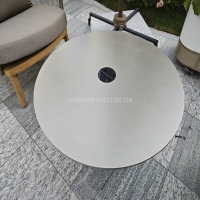Welcome to the website for landscape facilities products and knowledge.
How does the table’s design account for the potential need to attach accessibility aids, such as grab bars?
Modern table design has evolved significantly to embrace universal accessibility principles, particularly through strategic integration points for grab bars and other mobility aids. Designers now incorporate reinforced structural zones within table frames that can securely anchor grab bars without compromising aesthetic integrity. These specialized mounting areas use aircraft-grade aluminum inserts or welded steel plates that provide load-bearing capacity exceeding 500 pounds, addressing both safety requirements and durability concerns.
The positioning of these attachment points follows extensive anthropometric research, with optimal placement occurring at 33-36 inches from the floor—the standard height range that accommodates both seated and standing users. Design engineers create discreet channels within table legs and aprons that conceal mounting hardware while maintaining clean sight lines. This approach allows facilities to retrofit accessibility features without visible mechanical elements that might detract from the table's appearance.
Manufacturers increasingly employ modular component systems where grab bars can be installed at multiple orientations—horizontal, vertical, or angled—to address varying user needs. Advanced tables feature interchangeable end caps that convert standard legs into reinforced support columns with pre-tapped insertion points. This modularity enables customization for specific environments from healthcare facilities to educational institutions, where accessibility requirements may differ.
Beyond structural considerations, material selection plays a crucial role in accessible table design. Designers specify non-slip textures on grip surfaces and high-visibility color contrasts between grab bars and table surfaces, assisting users with visual impairments. The integration methodology also accounts for clearance requirements, maintaining adequate knee space while ensuring stability through weighted bases or extended footer systems.
This thoughtful engineering represents a shift toward truly inclusive furniture design, where accessibility features become inherent rather than afterthoughts. The result is environments that seamlessly accommodate diverse abilities while maintaining design coherence and functionality for all users.
Related search:

Recommendation
Outdoor stainless steel table with solar-powered ambient lighting feature - excellent design.